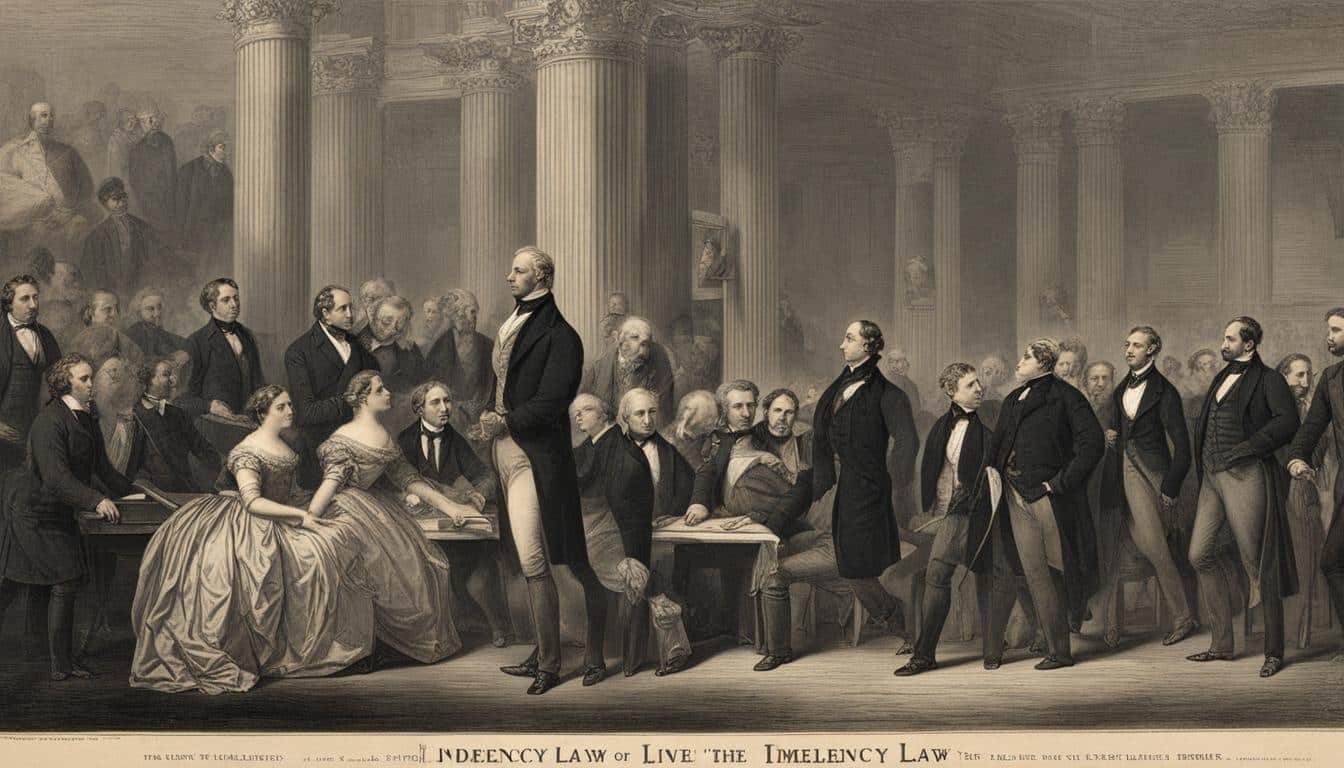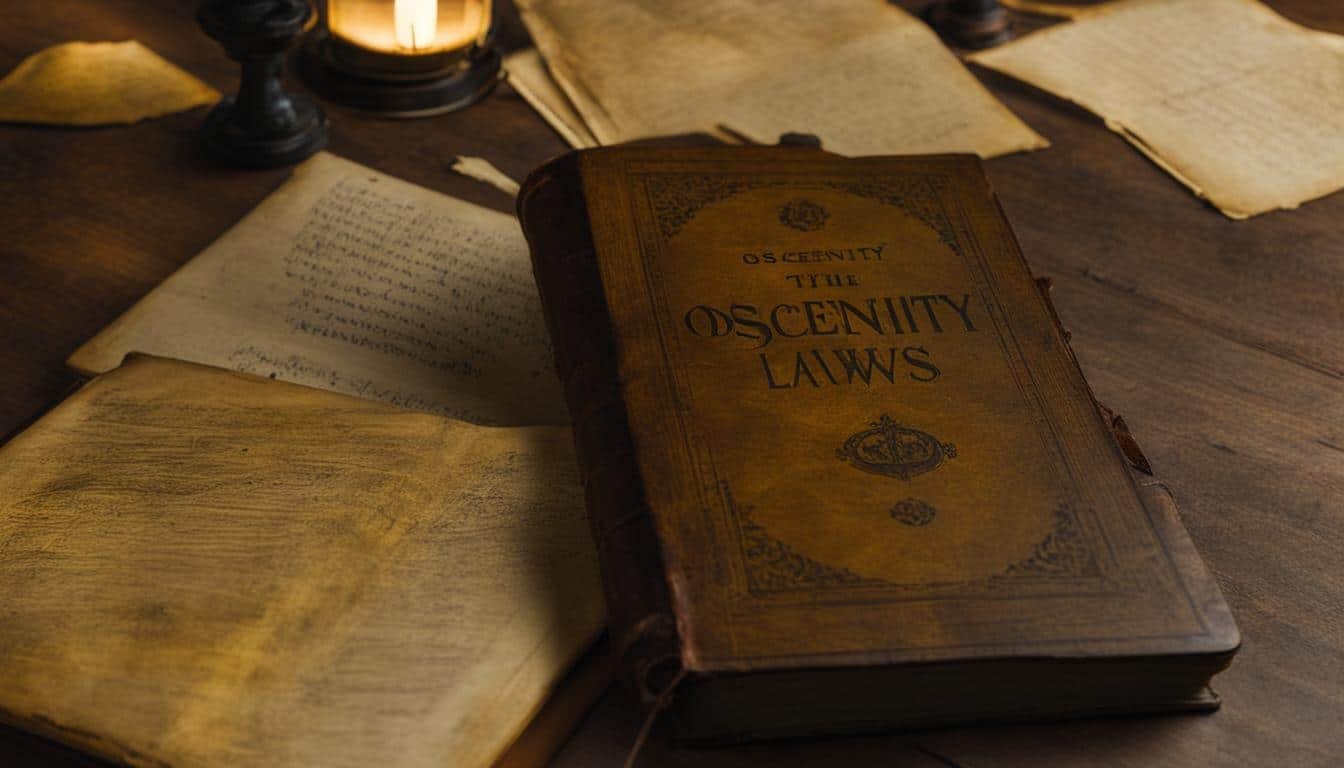The timeline of obscenity law changes in the United States is a reflection of the evolving socio-cultural shifts that have shaped indecency regulations over time. From the early 19th century to the present day, there have been several significant developments in how obscenity is defined and regulated. This timeline highlights key moments in the history of obscenity laws and their impact on freedom of expression.
Key Takeaways
- Obscenity law changes in the United States have evolved over time to reflect societal shifts.
- The 1873 Comstock Act marked a shift towards more centralized regulation of obscenity.
- Landmark cases and legal tests like the Roth Test and the Miller Test have shaped the definition and regulation of obscenity in the US.
The Early Years: From Local Regulation to National Legislation
In the mid-19th century, communities in the United States primarily regulated their own behavior when it came to obscenity. Local laws and moral codes varied from place to place, resulting in a patchwork of regulations that often lacked consistency. However, this decentralized approach would soon give way to a more centralized form of regulation.
The turning point came with the passage of the 1873 Comstock Act. Named after its chief advocate, Anthony Comstock, this landmark legislation aimed to combat the distribution of “obscene,” “lewd,” or “lascivious” material through the mail. The act made it illegal to send or receive materials related to sex education, contraception, and explicit literature.
The Comstock Act marked a significant shift in the regulation of obscenity, as it introduced national legislation that superseded local laws. It consolidated the power to define and enforce obscenity under the federal government, establishing a framework that would shape future developments in indecency laws.
The Impact of the Comstock Act
The passage of the Comstock Act had far-reaching consequences for the regulation of obscenity in the United States. It set a precedent for the federal government’s involvement in defining and controlling indecent materials, signaling a departure from the decentralized approach of the past. The act also sparked debates about the limits of freedom of expression and the appropriate role of government in shaping societal morality.
| Year | Event |
|---|---|
| 1873 | Passage of the Comstock Act, making it illegal to send or receive “obscene” materials through the mail |
| 1896 | Supreme Court upholds the conviction of a publisher under the Comstock Act, solidifying the federal government’s power to regulate obscenity |
| Early 20th century | Increase in prosecution and censorship efforts targeting “obscene” literature, art, and film |
It is important to note that while the Comstock Act represented a shift towards national regulation, it did not eliminate the influence of local laws entirely. Communities still had the authority to enforce their own standards of decency, leading to a complex and sometimes contradictory landscape of obscenity regulations.
The legacy of the Comstock Act continues to shape the conversation around obscenity and freedom of expression in the United States. It paved the way for further legal developments and discussions regarding the appropriate boundaries of indecency regulation.
The Evolution of Legal Tests and Definitions
The definition of obscenity and the legal tests used to determine it have evolved over time. Two landmark cases, Roth v. United States in 1957 and the Miller Test in 1973, have had a significant impact on how obscenity is understood and regulated in the United States.
In Roth v. United States, the Supreme Court established the Roth Test, which considered whether the dominant theme of the material appealed to a prurient interest, was patently offensive, and lacked redeeming social value.
Building upon the Roth Test, the Miller Test refined the criteria for determining obscenity. This test took into account contemporary community standards and considered the overall value of the material. It aimed to strike a balance between protecting freedom of expression and preventing the distribution of materials that were considered obscene.
These landmark obscenity cases and legal tests have played a crucial role in shaping the regulation of indecency in the United States. They have provided a framework for courts to evaluate what constitutes obscenity and have influenced subsequent decisions regarding freedom of speech and expression.
Source Links
- https://time.com/4373765/history-obscenity-united-states-films-miller-ulysses-roth/
- https://scholarship.law.unc.edu/cgi/viewcontent.cgi?article=1267&context=falr
- https://armstronghistoryjournal.wordpress.com/2021/10/04/i-know-it-when-i-see-it-the-supreme-court-and-the-changing-definition-of-obscenity/







